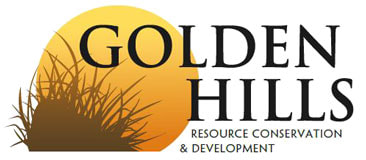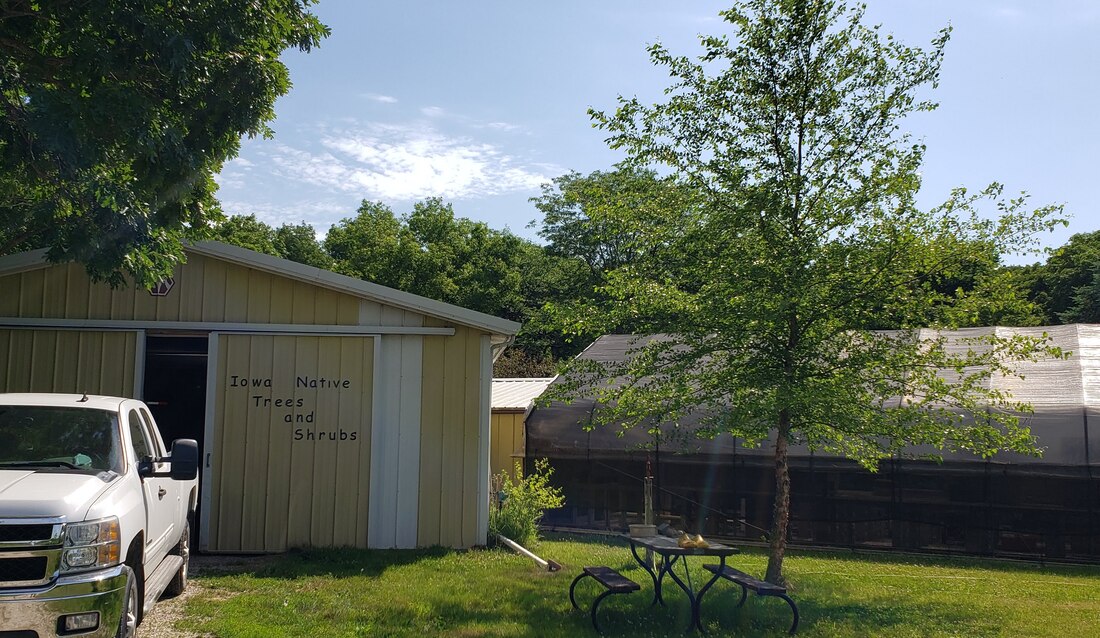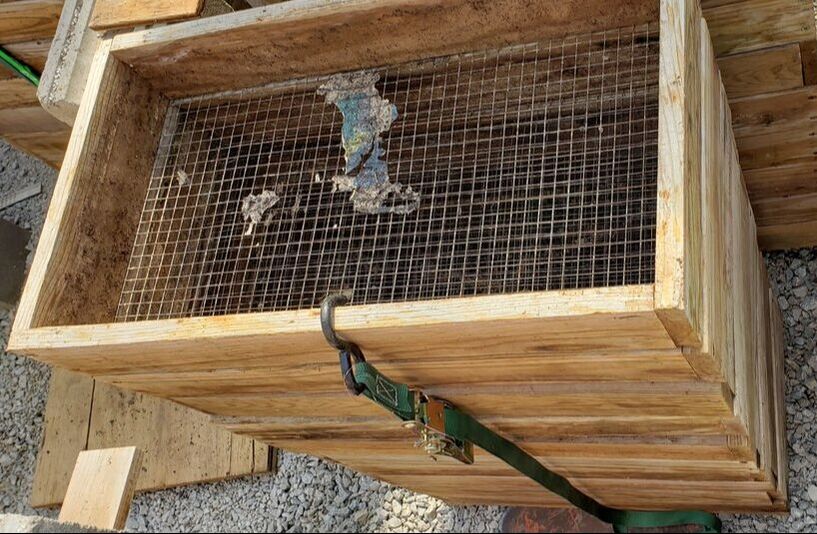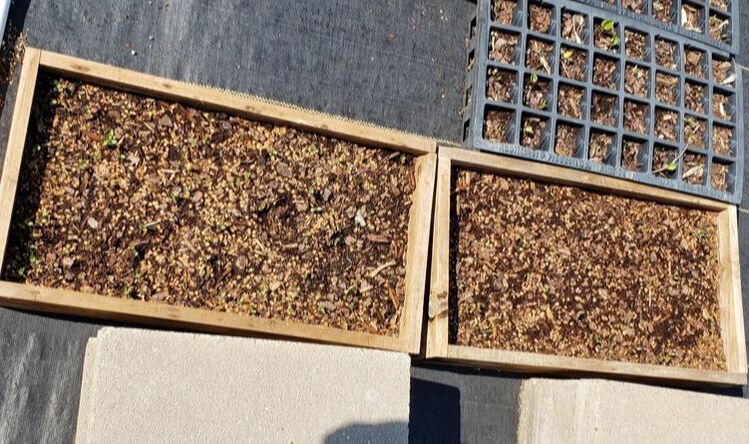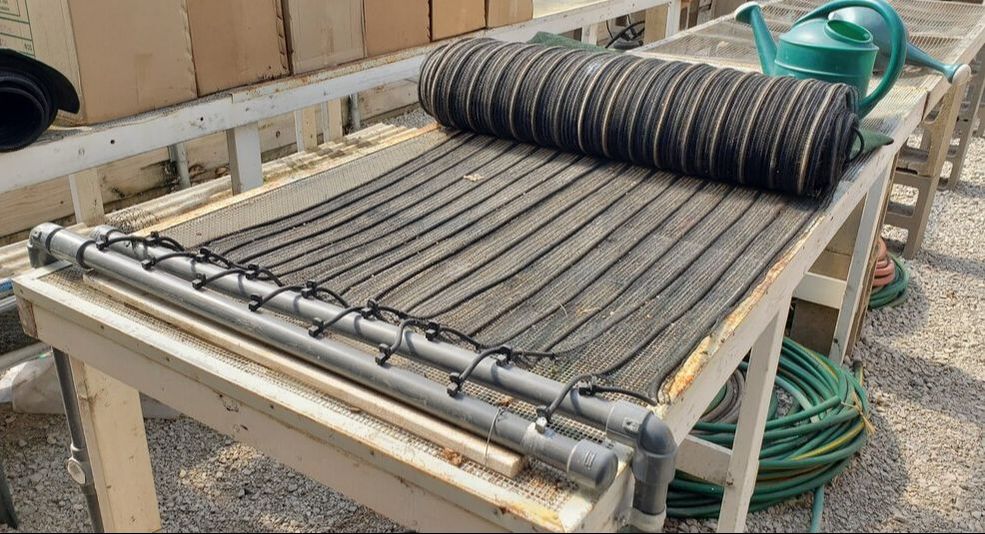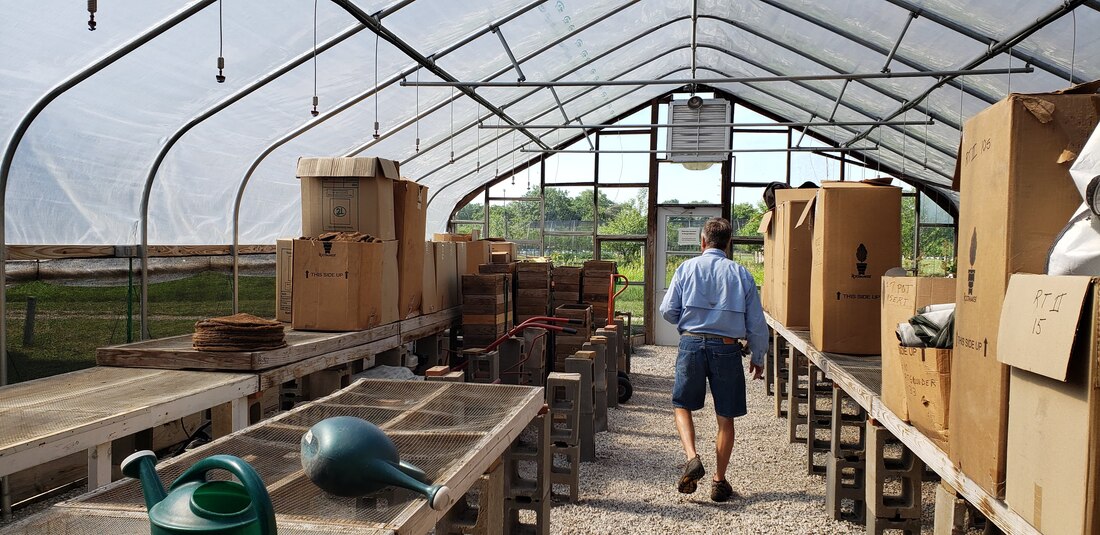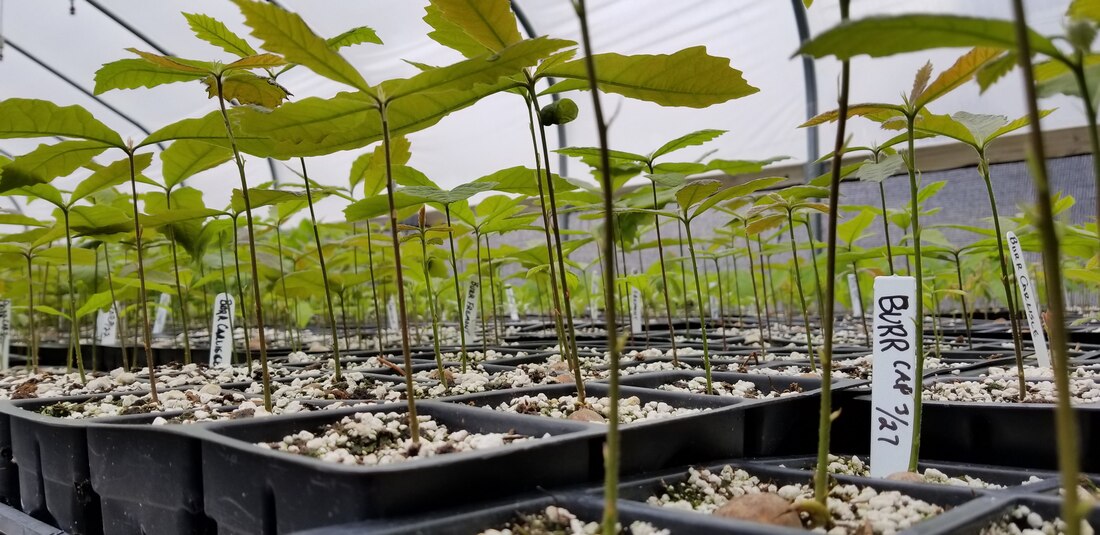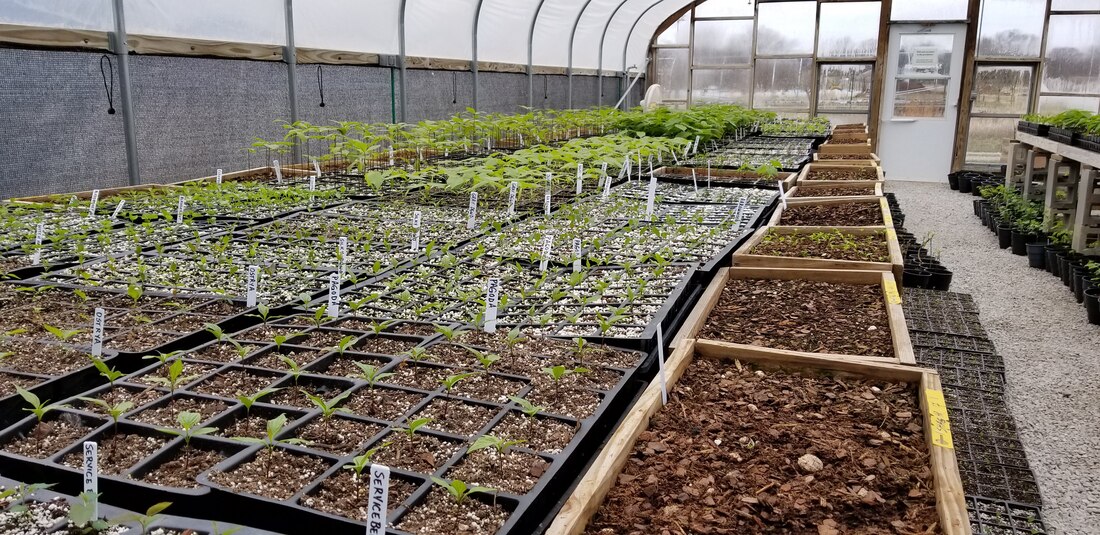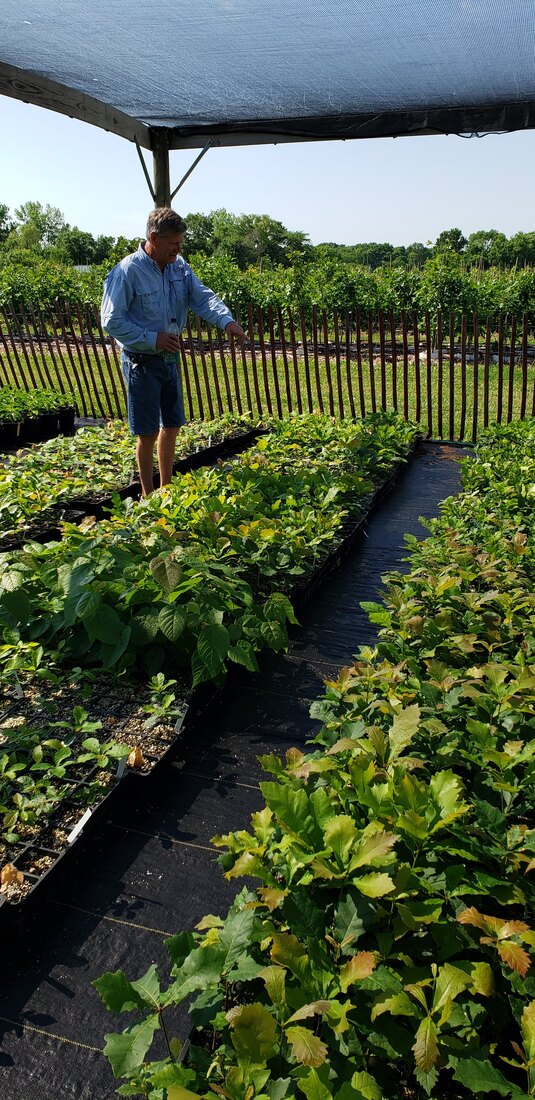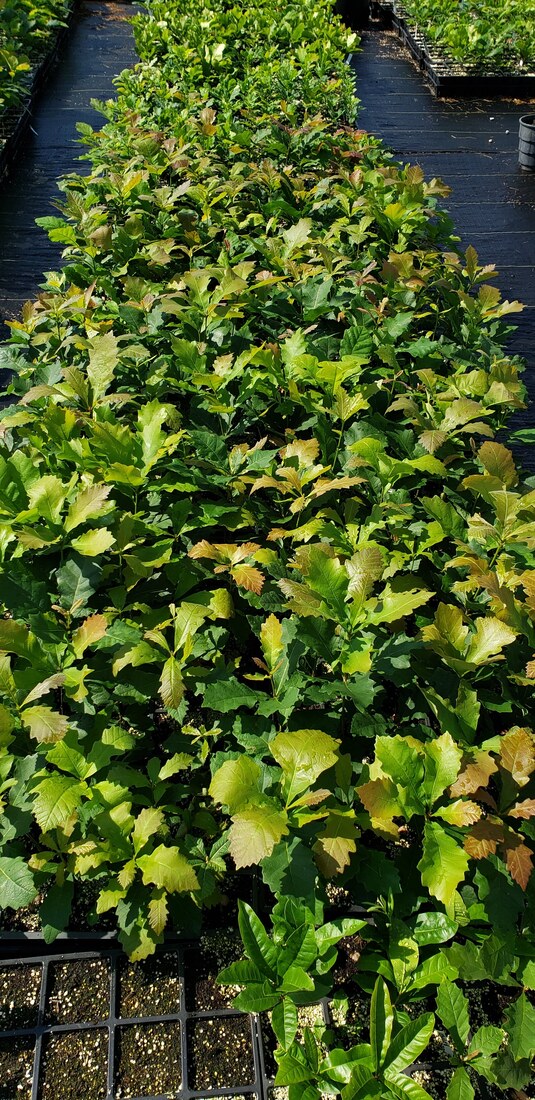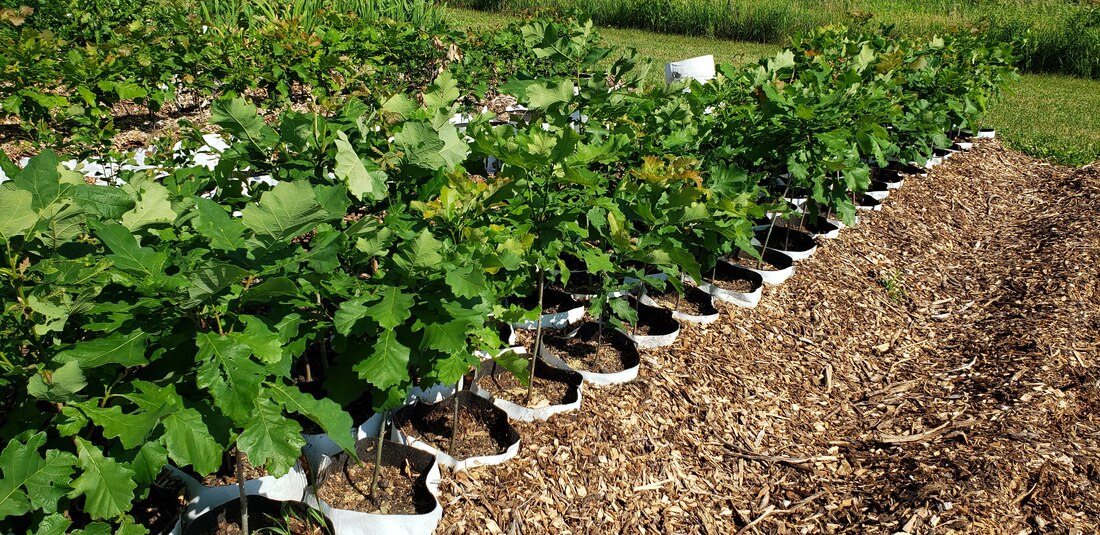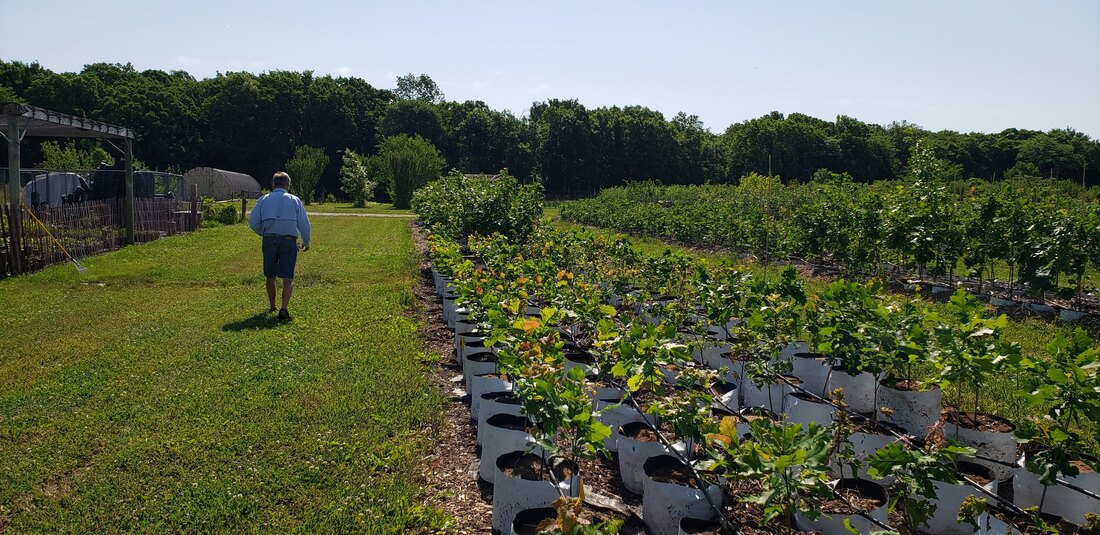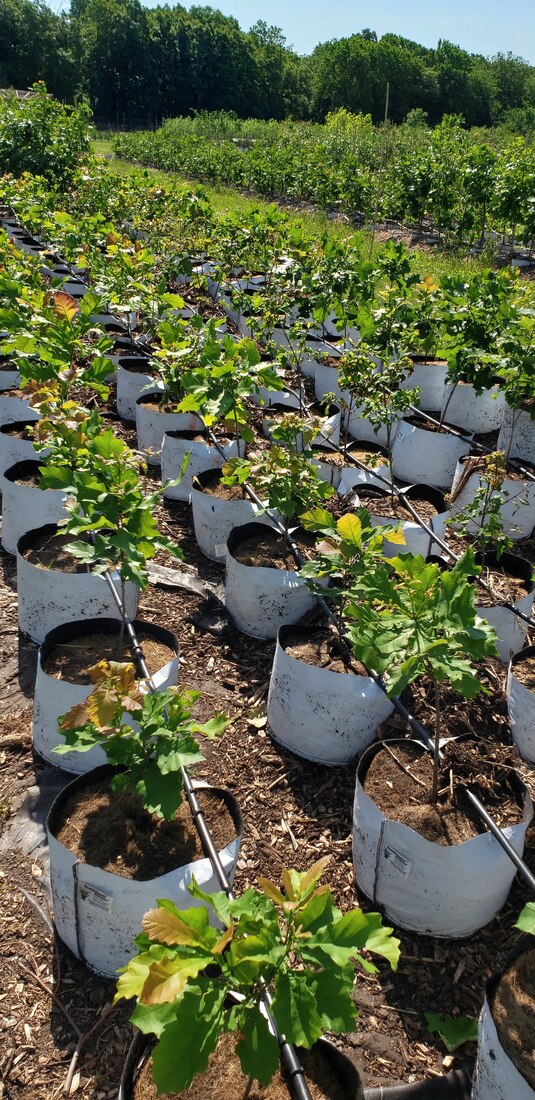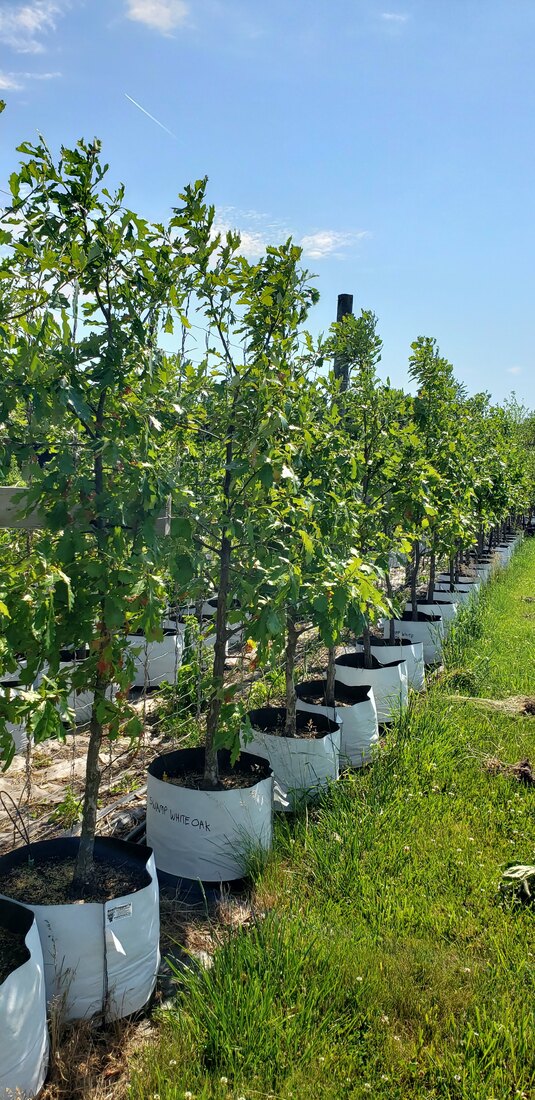As part of our Native Oaks Project, Mike Bevins with Iowa Native Trees & Shrubs near Woodward, Iowa has been kind enough to share some of his experience and tips for growing native oaks. Mike sources acorns and other seed from trees within Iowa. He believes that there is more than enough demand for more growers. As interest in shopping locally, supporting small businesses, and native landscaping increase, more producers will be needed. Water quality and streambank restoration projects also provide a major opportunity for more native trees on the landscape. Many of Mike's largest customers are the Iowa Department of Natural Resources (especially state parks), county conservation boards, and native plant enthusiasts.
Once acorns are harvested, Mike uses flats to set out the acorns to dry for a few days. He recommends harvesting right as they ripen to avoid weevil damage. Some years are worse than others, and 2019 was an especially bad year for weevils in many places.
MIke uses simple box trays with a screen bottom and wooden sides.
MIke uses simple box trays with a screen bottom and wooden sides.
When the acorns are ready, they are put in a bag in a refrigerator for the winter for cold stratification. In March, acorns are ready to plant. Newspaper is put on the bottom of the trays and covered with a soil mixture of pine fines and peat from Old Castle. He prefers a mix of small and large pine fines.
The trays are set on top of a heat mat laid on tables. The temperature is set to 70 degrees. The tables Mike uses are also simple metal mesh with wooden frames set on cinder blocks.
Plants must be watered regularly but too much water in the greenhouse can lead to damping off, which can kill plants.
Plants must be watered regularly but too much water in the greenhouse can lead to damping off, which can kill plants.
Mike has a 28'x40' double-poly greenhouse with roll-up sides. In this space he starts around 10,000 plants, and usually ends up with around 4,000 plants coming out of the greenhouse, with 2,500 saleable plants.
Mice, rabbits, and ground squirrels can be problematic in the greenhouse.
The trays are set outside after the threat of frost. When the acorns germinate, they are moved to 18- or 32-cell Rootmaker trays.
Mice, rabbits, and ground squirrels can be problematic in the greenhouse.
The trays are set outside after the threat of frost. When the acorns germinate, they are moved to 18- or 32-cell Rootmaker trays.
Once the seedlings are large enough (when they have a second flush of leaves), they are moved to #1 rootbags. At the end of summer, the trees are typically large enough to be transplanted to #3 bags. Size #3 trees are usually 2-4 feet tall at two years old and sell for $45. For customers who prefer larger trees, size #7 trees are typically about 5-6 feet tall at three years old and sell for $85-100.
Most cities prefer 2" caliper trees and Mike generally sells trees up to 1.5" caliper.
Most cities prefer 2" caliper trees and Mike generally sells trees up to 1.5" caliper.
Outside, the trees are in a fenced-in area to prevent deer damage. The 8-feet-tall exclusion fence has worked well. Rabbits can also cause crop damage. Sometimes trees will get scale, which can be treated with dormant oil. Other pests that can be an issue are aphids, leafhoppers, and Japanese beetles. As the trees grow larger, they require more water. Mike uses 1" irrigation line in the field.
Mike recommends growers check out Dr. Carl Whitcomb's book Plant Production in Containers II. For information about germinating trees, he recommends Henry Kock's book Growing Trees from Seed: A Practical Guide to Growing Native Trees, Vines, and Shrubs.
Visit the Iowa Native Trees and Shrubs website here.
Mike recommends growers check out Dr. Carl Whitcomb's book Plant Production in Containers II. For information about germinating trees, he recommends Henry Kock's book Growing Trees from Seed: A Practical Guide to Growing Native Trees, Vines, and Shrubs.
Visit the Iowa Native Trees and Shrubs website here.
Address712 South Highway Street
P.O. Box 189 Oakland, IA 51560 |
ContactPhone: 712-482-3029
General inquiries: [email protected] Visit our Staff Page for email addresses and office hours. |
